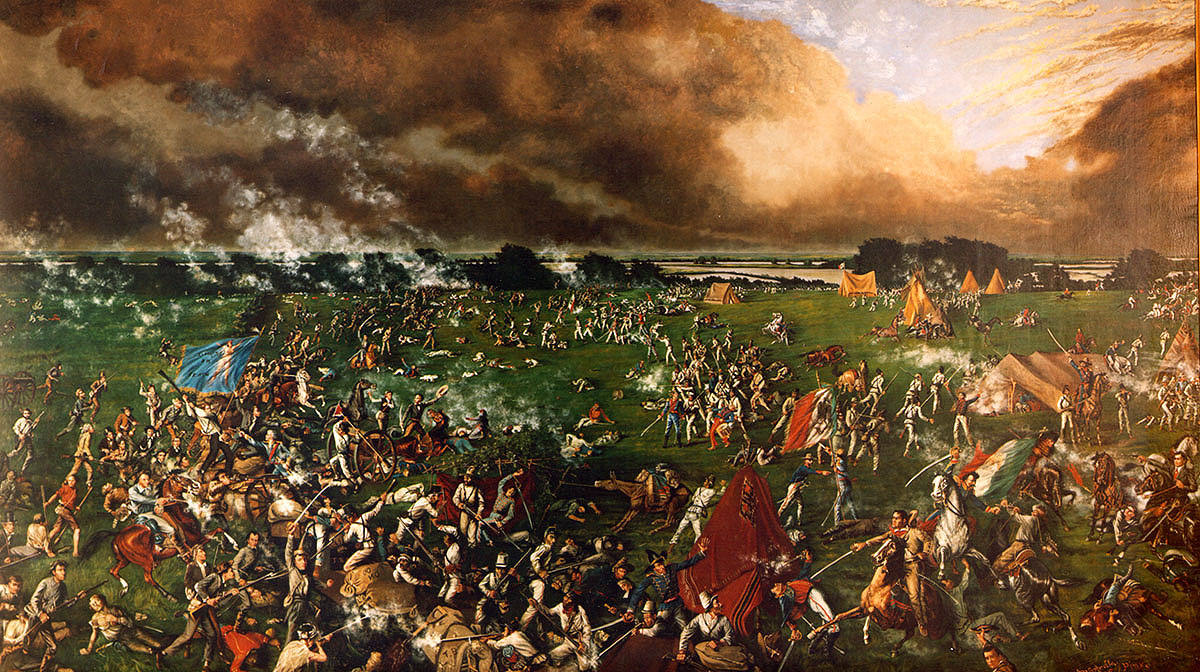Everything’s bigger in Texas. With blue skies and miles and miles of every type of landscape you can imagine, we do things a little differently here. We’re known for being over the top and having single-minded devotion to our fashion (cowboy boots, anyone?) and music (can you say Willie?) and our great outdoors (from Big Bend to South Padre Island).
With spring on the horizon, there’s one Texas-sized reason to celebrate: March 2nd marks 180 glorious years of Texas independence from Mexico. Collin County gets an extra reason to celebrate as April marks the Sestercentennial, or 250th birthday, of our county’s namesake and original signer of the Texas Declaration of Independence, Collin McKinney.

Battle of San Jacinto
In 1836, Texas was part of Mexico. The Texians, led by such infamous names as Davy Crockett, James Bowie, William Barrett Travis and more, mounted an impressive rebellion against General Antonio Lopez de Santa Anna and his Mexican army. Mexico’s imposed taxes and restrictions were no longer a welcome fit and through numerous battles in places like Goliad, Gonzales and a little place called The Alamo, the Texians launched an unlikely campaign to win independence that culminated at the Battle of San Jacinto in April 1836.
It was one of the most decisive and unexpected battles in history, where General Sam Houston and about 900 Texians surprised and subdued the 1,360-man army of Santa Anna in a fight that only lasted 18 minutes, killing 630 Mexicans compared to only nine Texian fatalities and 26 wounded, including Houston himself who took a bullet in the ankle.
Santa Anna fled the raging battle and sheepishly dressed in the garb of his fallen soldiers to hide from Houston’s army. When the remaining Mexican soldiers saluted their incognito leader, Houston knew they’d found their man. Santa Anna was taken into custody where he bargained to keep his life if he signed the Treaty of Velasco, in which he relinquished control of the territory known as Texas and agreed to remove all Mexican troops from Texas soil.

Our independence from Mexico led to the Republic of Texas becoming its own country from 1836 to 1845, a period where Texas was seen as an equal to other countries. Texas is the only state in the union that existed as a country before becoming part of the United States in 1845. Eventually our independence led to the Mexican-American War, which resulted in the United States’ acquisition of the states of Texas, New Mexico, Arizona, Nevada, California, Utah and parts of Colorado, Wyoming, Kansas and Oklahoma. Almost one-third of the present area of the American nation–nearly a million square miles of territory–changed sovereignty.
Collin McKinney
Among the 58 statesmen that comprised the Texas Consultation, befriending and working alongside military heroes for Texas’ independence, was Collin McKinney. He was one of five men tasked to draft the Texas Declaration of Independence at the Convention of 1836. At 70 years of age, he was the first and oldest delegate to sign the document and was presented with the quill and inkwell used to sign it. He was also responsible for the configuration of Texas counties, with the requirement that no county should be larger than a day’s ride by horse to the county seat.
As namesake of both Collin County and the county seat of McKinney, his life will be memorialized with a Texas-sized Sestercentennial celebration this April. An original manuscript has been published, titled “Texas Maker: The Heretofore Unknown Legend of Collin McKinney,” with story and illustrations by author Eric Nishimoto. It tells how McKinney, an humble yet steel-willed statesman, businessman, lay preacher, outfitter, Indian fighter and more, quietly helped guide Texas toward independence, the formation of the Republic of Texas and annexation to the United States.
One of the first men that legendary frontiersman Davy Crockett sought out after making his famous “You may all go to hell and I will go to Texas” speech was Collin McKinney. That Davy Crockett sure didn’t mince words. He hot-footed it to Texas, devil-may-care, perhaps because he knew it was destined to become the closest thing to heaven. Collin McKinney and others like him along the road to independence clearly agreed.
On the weekend of April 16, the city of McKinney will host Collin McKinney’s 250th birthday party.
collinmckinney250.org
The San Jacinto Day Festival and Battle Reenactment is planned for April 23, in La Porte, TX.
sanjacinto-museum.org
Featured photo at top is a reenactment of the Battle of San Jacinto, courtesy of the San Jacinto Museum. Story was co-authored by Janice Craze Cline and Kaci Lahpor.





